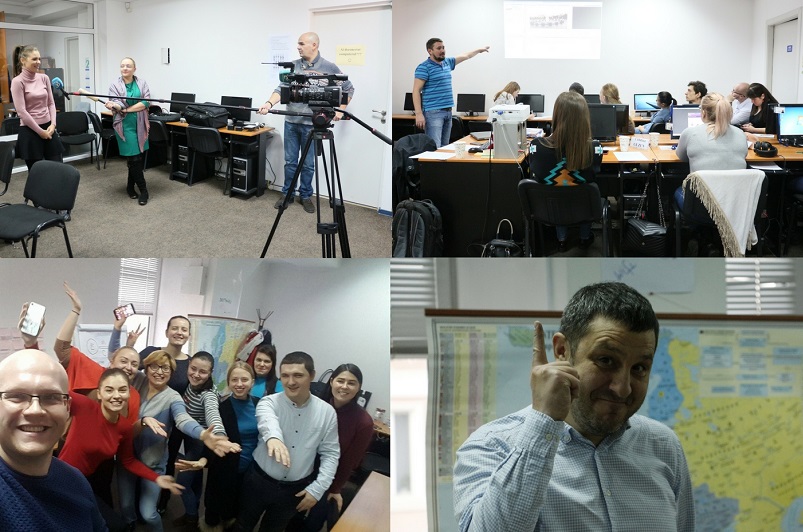TV Journalism: Writing Under Pressure, Speaking Through Images

What is the specificity of work at television? How TV reports are created? What is the difference between a feature for print media and a broadcast feature? How can one capture and keep the attention of a modern viewer? How to shoot properly and what is the secret of a successful stand-up? These are only some of the questions that the students of SAJ sought answers to at the course of TV Journalism. The best television professionals – Dorin Scobioala, Dumitru Marian, Oxana Iutes and Andrei Cibotaru – worked together with the students.
The course lasted four weeks, and it is one of the most complicated at the School. Its purpose is to provide students with not only theoretical, but also practical knowledge necessary for a television journalist, so when they graduate, students will be able to work as reporters, editors, producers or TV hosts.
To initiate the students into the world of television, the course was divided into four modules, the first of which was held by Dorin Scobioala, director of the “Cat Studio” Production Company and correspondent for Reuters TV and Antena 3 in Moldova. The trainer told students about the functions of television, the specifics of a visual message and importance of images. They also discussed the structure of a TV report. Students have learned what sync, voice over, and beta are and have shot a stand-up each. The emphasis was put on acquiring teamwork skills – a very important aspect for work in a TV newsroom.
The brief and captivating introduction to television was followed by the second module – Technical TV Skills. Guided and trained by the film director Dumitru Marian, the students learned everything about video cameras and studied the Adobe Premiere video editing application. Dumitru Marian explained why two frames are put together, how to combine different backgrounds, how to shoot a panorama, a detail, a forefront and a general view. Students have learned what composition, frame, scene, shooting axis, video format, non-linear and linear editing are.
The following two modules allowed students to transform into practice what they had learned in theory. So, having equipped themselves with microphones, video cameras, tripods and documented a number of topics, future reporters produced a number of materials, such as features and TV reports. For five days the TV journalist Oxana Iutes worked together with the students. She spoke with them about the specifics of television language, the content of journalistic materials and, last but not least, the importance of fieldwork. “Try to make your viewer feel, see and hear what you have felt, seen and heard when you were making the report,” the journalist said.
The students learned how to work in a real newsroom during the last, most complicated but most interesting module: TV Newsroom. For five days, guided by trainer Andrei Cibotaru, the students had to produce several newscasts. For this, every morning, a traditional “editorial meeting” was held at the School, where the students proposed and approved, together with the producer, news topics. Then, after hours of documenting, fieldwork, shooting and discussions with sources, texts were written and reports were edited. And at 16:00 we watched together the newscasts created by the SAJ students... At the end of the course, Andrei Cibotaru congratulated everyone on the work they did and the courage they showed, and urged them to continue doing their job honestly and correctly.
These days the School of Advanced Journalism is doing the course of Visual Journalism.
